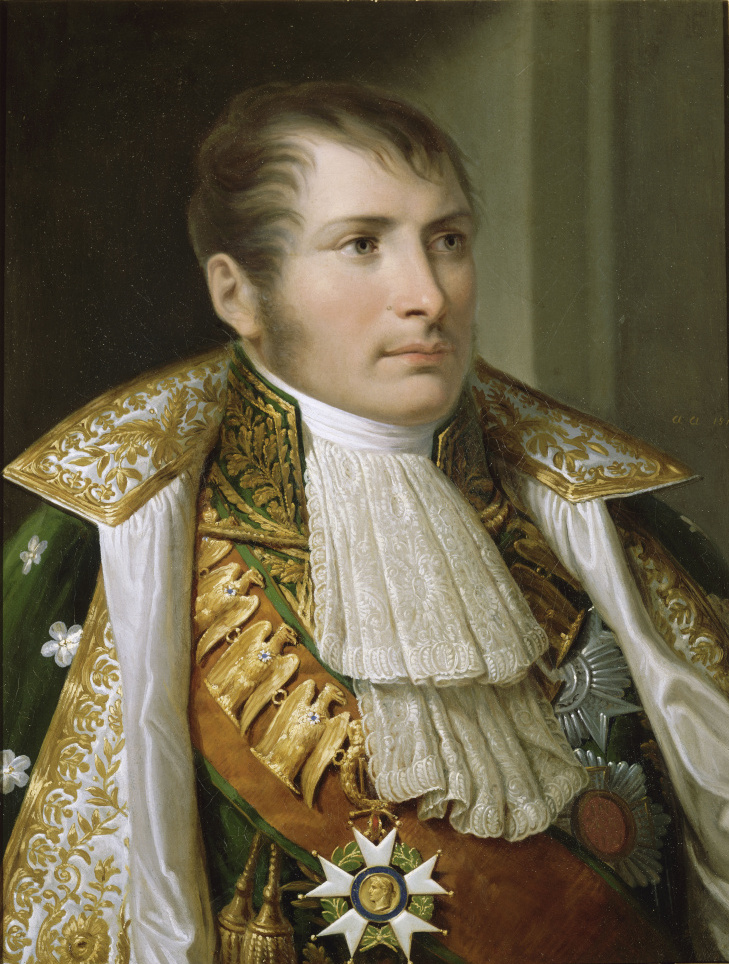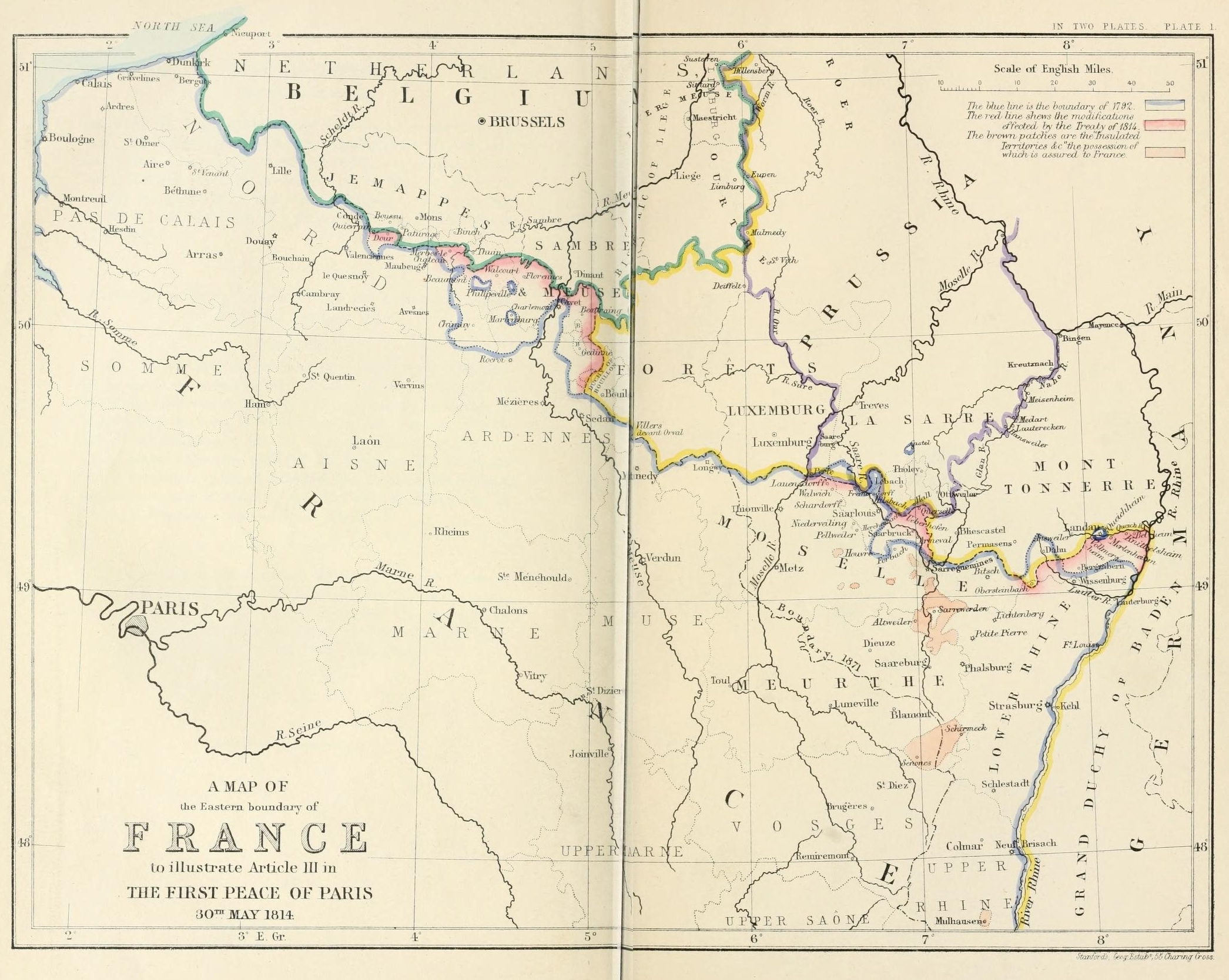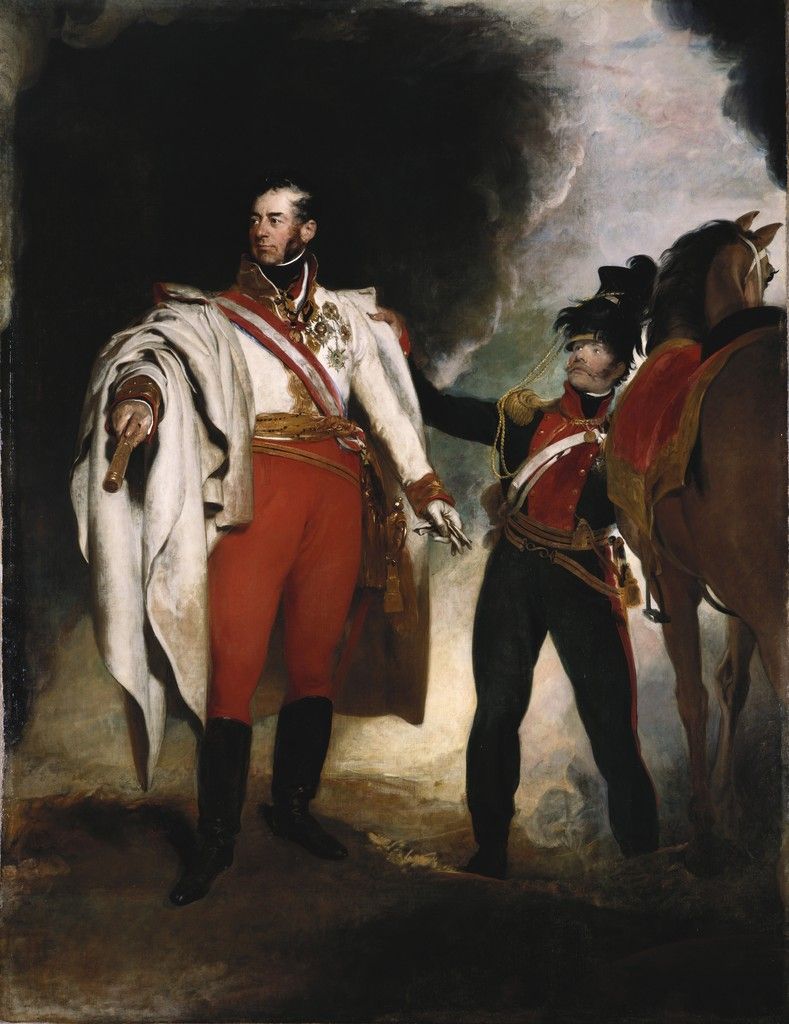|
Johann Maria Frimont
Johann Maria Philipp Frimont, ''Count of Palota, Prince of Antrodoco'' (3 February 1759 – 26 December 1831) was an Austrian general. Frimont was born at Fénétrange, in what is now French Lorraine. He entered the Austrian cavalry as a trooper in 1776, won his commission in the War of the Bavarian Succession, and took part in the Turkish wars and in the early campaigns against the French Revolutionary armies, in which he frequently earned distinction. At Frankenthal in 1796 he won the Military Order of Maria Theresa. In the campaign of 1800 he distinguished himself greatly as a cavalry leader at Marengo (14 June), and in the next year became major-general. In the war of 1805 he was again employed in Italy and won further renown by his gallantry at the battle of Caldiero. In 1809 he again saw active service in Italy under the Archduke John in the rank of lieutenant field marshal, serving in Chasteler's Corps at 1st Sacile 15–16 April, and Caldiero (Soave). He commanded t ... [...More Info...] [...Related Items...] OR: [Wikipedia] [Google] [Baidu] |
Johann Maria Philipp Frimont
Johann Maria Philipp Frimont, ''Count of Palota, Prince of Antrodoco'' (3 February 1759 – 26 December 1831) was an Austrian general. Frimont was born at Fénétrange, in what is now French Lorraine. He entered the Austrian cavalry as a trooper in 1776, won his commission in the War of the Bavarian Succession, and took part in the Turkish wars and in the early campaigns against the French Revolutionary armies, in which he frequently earned distinction. At Frankenthal in 1796 he won the Military Order of Maria Theresa. In the campaign of 1800 he distinguished himself greatly as a cavalry leader at Marengo (14 June), and in the next year became major-general. In the war of 1805 he was again employed in Italy and won further renown by his gallantry at the battle of Caldiero. In 1809 he again saw active service in Italy under the Archduke John in the rank of lieutenant field marshal, serving in Chasteler's Corps at 1st Sacile 15–16 April, and Caldiero (Soave). He commanded th ... [...More Info...] [...Related Items...] OR: [Wikipedia] [Google] [Baidu] |
Battle Of Caldiero (1809)
In the Battle of Caldiero or Battle of Soave or Battle of Castelcerino from 27 to 30 April 1809, an Austrian army led by Archduke John of Austria defended against a Franco-Italian army headed by Eugène de Beauharnais, the Viceroy of the Kingdom of Italy. The outnumbered Austrians successfully fended off the attacks of their enemies in actions at San Bonifacio, Soave, and Castelcerino before retreating to the east. The clash occurred during the War of the Fifth Coalition, part of the Napoleonic Wars. In the opening engagements of the war, Archduke John defeated the Franco-Italian army and drove it back to the Adige River at Verona. Forced to detach substantial forces to watch Venice and other enemy-held fortresses, John found himself facing a strongly reinforced Franco-Italian army near Verona. So embarrassed by his setbacks that he tried to minimize them in communications to his step-father Emperor Napoleon, Eugène determined to use his superior forces to drive the Austria ... [...More Info...] [...Related Items...] OR: [Wikipedia] [Google] [Baidu] |
Kingdom Of Naples
The Kingdom of Naples ( la, Regnum Neapolitanum; it, Regno di Napoli; nap, Regno 'e Napule), also known as the Kingdom of Sicily, was a state that ruled the part of the Italian Peninsula south of the Papal States between 1282 and 1816. It was established by the War of the Sicilian Vespers (1282–1302), when the island of Sicily revolted and was conquered by the Crown of Aragon, becoming a separate kingdom also called the Kingdom of Sicily. In 1816, it reunified with the island of Sicily to form the Kingdom of the Two Sicilies. The territory of the Kingdom of Naples corresponded to the current Italian regions of Campania, Calabria, Apulia, Basilicata, Abruzzo, Molise and also included some areas of today's southern and eastern Lazio. Nomenclature The term "Kingdom of Naples" is in near-universal use among historians, but it was not used officially by the government. Since the Angevins remained in power on the Italian peninsula, they kept the original name of the Kingdom ... [...More Info...] [...Related Items...] OR: [Wikipedia] [Google] [Baidu] |
Venice
Venice ( ; it, Venezia ; vec, Venesia or ) is a city in northeastern Italy and the capital of the Veneto Regions of Italy, region. It is built on a group of 118 small islands that are separated by canals and linked by over 400 bridges. The islands are in the shallow Venetian Lagoon, an enclosed bay lying between the mouths of the Po River, Po and the Piave River, Piave rivers (more exactly between the Brenta (river), Brenta and the Sile (river), Sile). In 2020, around 258,685 people resided in greater Venice or the ''Comune di Venezia'', of whom around 55,000 live in the historical island city of Venice (''centro storico'') and the rest on the mainland (''terraferma''). Together with the cities of Padua, Italy, Padua and Treviso, Italy, Treviso, Venice is included in the Padua-Treviso-Venice Metropolitan Area (PATREVE), which is considered a statistical metropolitan area, with a total population of 2.6 million. The name is derived from the ancient Adri ... [...More Info...] [...Related Items...] OR: [Wikipedia] [Google] [Baidu] |
Lyon
Lyon,, ; Occitan: ''Lion'', hist. ''Lionés'' also spelled in English as Lyons, is the third-largest city and second-largest metropolitan area of France. It is located at the confluence of the rivers Rhône and Saône, to the northwest of the French Alps, southeast of Paris, north of Marseille, southwest of Geneva, northeast of Saint-Étienne. The City of Lyon proper had a population of 522,969 in 2019 within its small municipal territory of , but together with its suburbs and exurbs the Lyon metropolitan area had a population of 2,280,845 that same year, the second most populated in France. Lyon and 58 suburban municipalities have formed since 2015 the Metropolis of Lyon, a directly elected metropolitan authority now in charge of most urban issues, with a population of 1,411,571 in 2019. Lyon is the prefecture of the Auvergne-Rhône-Alpes region and seat of the Departmental Council of Rhône (whose jurisdiction, however, no longer extends over the Metropolis of Lyo ... [...More Info...] [...Related Items...] OR: [Wikipedia] [Google] [Baidu] |
France
France (), officially the French Republic ( ), is a country primarily located in Western Europe. It also comprises of Overseas France, overseas regions and territories in the Americas and the Atlantic Ocean, Atlantic, Pacific Ocean, Pacific and Indian Oceans. Its Metropolitan France, metropolitan area extends from the Rhine to the Atlantic Ocean and from the Mediterranean Sea to the English Channel and the North Sea; overseas territories include French Guiana in South America, Saint Pierre and Miquelon in the North Atlantic, the French West Indies, and many islands in Oceania and the Indian Ocean. Due to its several coastal territories, France has the largest exclusive economic zone in the world. France borders Belgium, Luxembourg, Germany, Switzerland, Monaco, Italy, Andorra, and Spain in continental Europe, as well as the Kingdom of the Netherlands, Netherlands, Suriname, and Brazil in the Americas via its overseas territories in French Guiana and Saint Martin (island), ... [...More Info...] [...Related Items...] OR: [Wikipedia] [Google] [Baidu] |
Neapolitan War
The Neapolitan War, also known as the Austro-Neapolitan War, was a conflict between the Napoleonic Kingdom of Naples and the Austrian Empire. It started on 15 March 1815 when King Joachim Murat declared war on Austria and ended on 20 May 1815 with the signing of the Treaty of Casalanza. The war occurred during the Hundred Days between Napoleon's return from exile and before he left Paris to be decisively defeated at the Battle of Waterloo. The war was triggered by a pro-Napoleon uprising in Naples, and ended with a decisive Austrian victory at the Battle of Tolentino after which Bourbon monarch Ferdinand IV was reinstated as King of Naples and Sicily. However, the intervention by Austria caused resentment in Italy, which further spurred on the drive towards Italian unification. Background Before the French Revolutionary Wars, Naples was ruled by the Bourbon King Ferdinand IV. Ferdinand was a natural opponent of Napoleon and was allied with the Third Coalition against him. Ho ... [...More Info...] [...Related Items...] OR: [Wikipedia] [Google] [Baidu] |
Mainz
Mainz () is the capital and largest city of Rhineland-Palatinate, Germany. Mainz is on the left bank of the Rhine, opposite to the place that the Main (river), Main joins the Rhine. Downstream of the confluence, the Rhine flows to the north-west, with Mainz on the left bank, and Wiesbaden, the capital of the neighbouring state Hesse, on the right bank. Mainz is an independent city with a population of 218,578 (as of 2019) and forms part of the Frankfurt Rhine-Main, Frankfurt Rhine-Main Metropolitan Region. Mainz was founded by the Roman Empire, Romans in the 1st century BC as a military fortress on the northernmost frontier of the empire and provincial capital of Germania Superior. Mainz became an important city in the 8th century AD as part of the Holy Roman Empire, capital of the Electorate of Mainz and seat of the Elector of Mainz, Archbishop-Elector of Mainz, the Primate (bishop), Primate of Germany. Mainz is famous as the birthplace of Johannes Gutenberg, the inventor of ... [...More Info...] [...Related Items...] OR: [Wikipedia] [Google] [Baidu] |
Treaty Of Paris (1814)
The Treaty of Paris, signed on 30 May 1814, ended the war between France and the Sixth Coalition, part of the Napoleonic Wars, following an armistice signed on 23 April between Charles, Count of Artois, and the allies. The treaty set the borders for France under the House of Bourbon and restored territories to other nations. It is sometimes called the First Peace of Paris, as another one followed in 1815. Parties to the treaty This treaty was signed on 30 May 1814, following an armistice signed on 23 April 1814 between Charles, Count of Artois, and the allies. Napoleon had abdicated as Emperor on 6 April, as a result of negotiations at Fontainebleau. Peace talks had started on 9 May between Talleyrand, who negotiated with the allies of Chaumont on behalf of the exiled Bourbon king Louis XVIII of France, and the allies. The Treaty of Paris established peace between France and Great Britain, Russia, Austria, and Prussia, who in March had defined their common war aim in Chaum ... [...More Info...] [...Related Items...] OR: [Wikipedia] [Google] [Baidu] |
Battle Of Caldiero (1813)
The Battle of Caldiero on 15 November 1813 saw an army of the First French Empire under Eugène de Beauharnais opposed to an Austrian Empire army led by Johann von Hiller. Eugène, who was the Viceroy of the Napoleonic Kingdom of Italy inflicted a defeat on Hiller's troops, driving them from Caldiero. The action took place during the War of the Sixth Coalition, part of the Napoleonic Wars. Caldiero is located east of Verona on the Autostrada A4. When Austria entered the war against Napoleon in August 1813, Eugène attempted to defend the Illyrian Provinces east of Italy. Ultimately, the Austrians compelled the Franco-Italian army to retreat to the Adige River. As Hiller's forces closed in on Verona from the north and east, Eugène tried to fend them off. The viceroy pushed back the northern force, then rushed back to attack Paul von Radivojevich's Austrians at Caldiero. On the 15th, his divisions under François Jean Baptiste Quesnel and Marie François Rouyer drove the Austria ... [...More Info...] [...Related Items...] OR: [Wikipedia] [Google] [Baidu] |
Napoleon's Invasion Of Russia
The French invasion of Russia, also known as the Russian campaign, the Second Polish War, the Army of Twenty nations, and the Patriotic War of 1812 was launched by Napoleon Bonaparte to force the Russian Empire back into the continental blockade of the United Kingdom. Napoleon's invasion of Russia is one of the best studied military campaigns in history and is listed among the most lethal military operations in world history. It is characterized by the massive toll on human life: in less than six months nearly a million soldiers and civilians died. On 24 June 1812 and the following days, the first wave of the multinational crossed the Niemen into Russia. Through a series of long forced marches, Napoleon pushed his army of almost half a million people rapidly through Western Russia, now Belarus, in an attempt to destroy the separated Russian armies of Barclay de Tolly and Pyotr Bagration who amounted to around 180,000–220,000 at this time. Within six weeks, Napoleon lost ha ... [...More Info...] [...Related Items...] OR: [Wikipedia] [Google] [Baidu] |
Karl Philipp Fürst Zu Schwarzenberg
Karl Philipp, Fürst zu Schwarzenberg (or Charles Philip, Prince of Schwarzenberg; 18/19 April 1771 – 15 October 1820) was an Austrian Generalissimo. He fought in the Battle of Wagram (1809) but the Austrians lost decisively against Napoleon. He had to fight for Napoleon in the Battle of Gorodechno (1812) against the Russians and won. He was in command of the allied army that defeated Napoleon decisively in the Battle of Leipzig (1813). He joined the Battle of Paris (1814) that forced Napoleon to abdicate. Family Karl Philipp was born 18/19 April 1771 in Vienna, the son of Johann Nepomuk Anton of Schwarzenberg and Marie Eleonore Countess of Öttingen-Wallerstein. He was one of thirteen siblings, seven of whom did not reach adulthood.''Biographisches Lexikon des Kaiserthums Oesterreich,'' Band: 33 (1877), ab Seite: 82. Imperial service Karl Philipp entered the imperial cavalry in 1788, fought in 1789 under Lacy and Laudon against the Turks, distinguished himself by his br ... [...More Info...] [...Related Items...] OR: [Wikipedia] [Google] [Baidu] |

.jpg)
.jpg)


